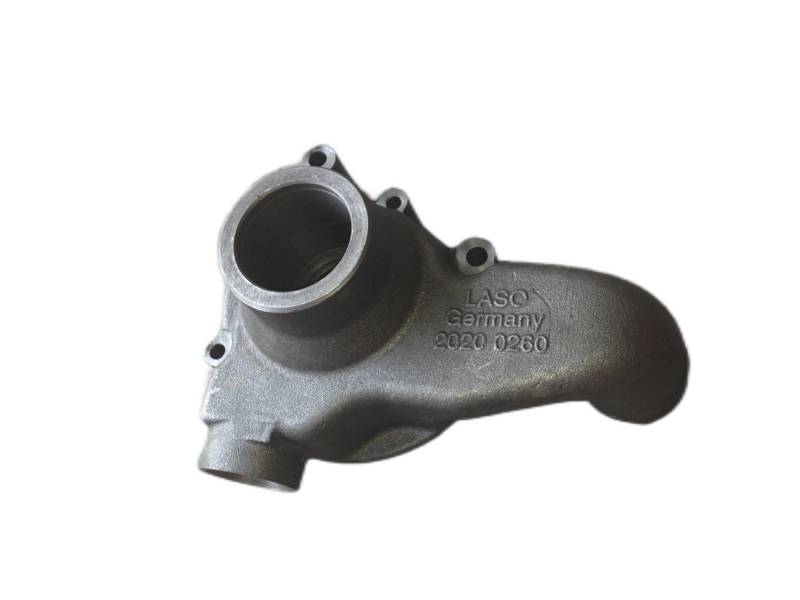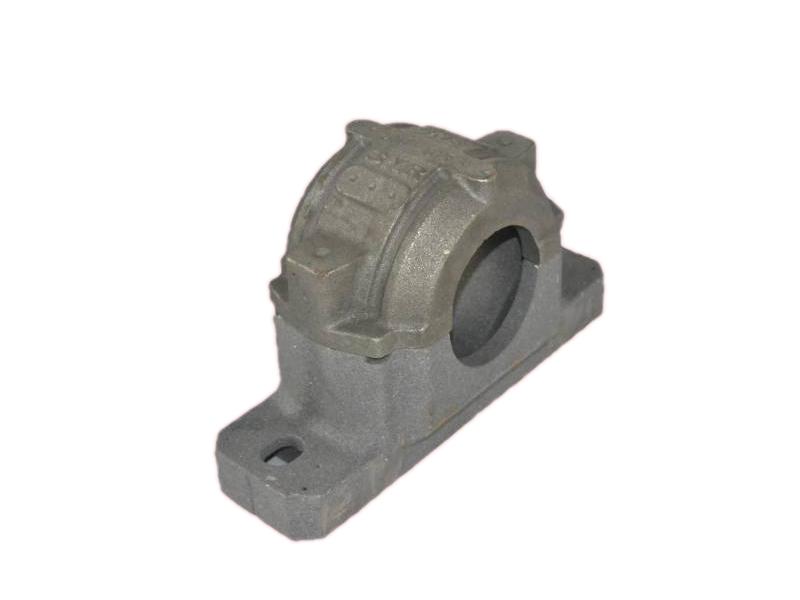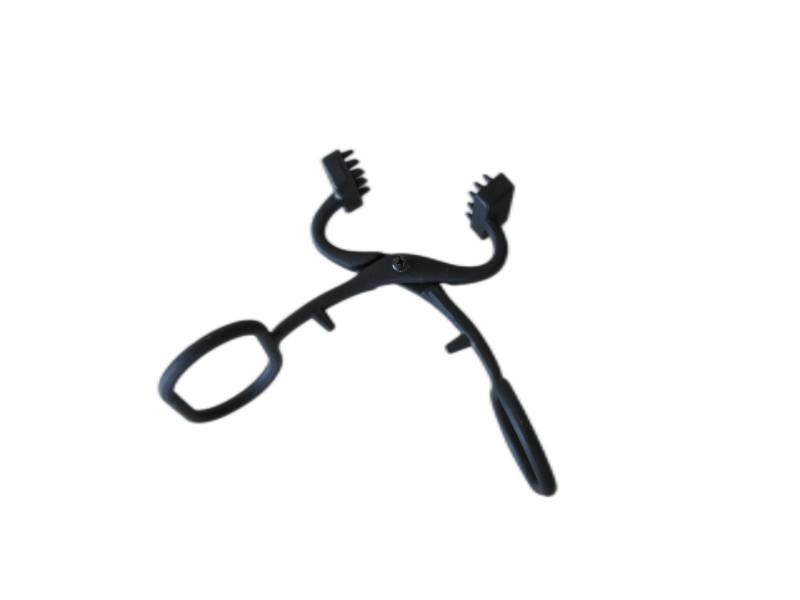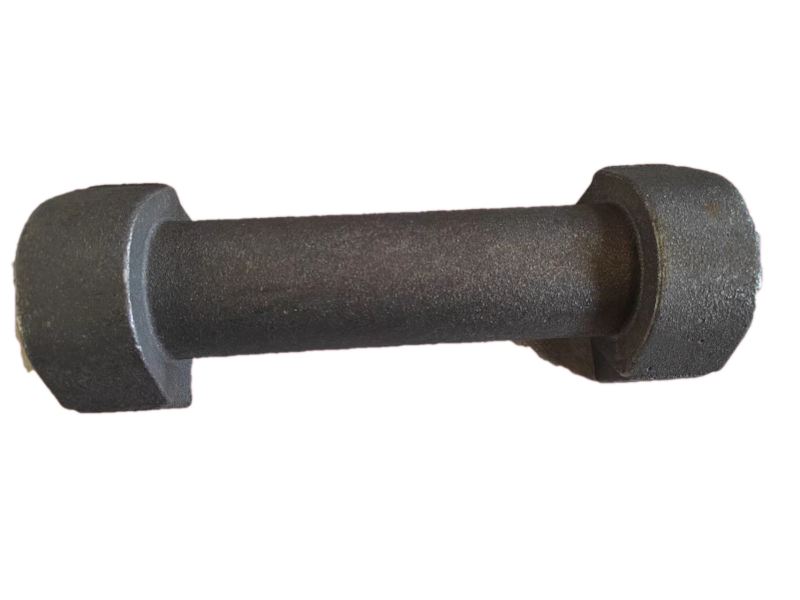Ductile Iron Joint Shaft Couplings and U-joints are used to connect rotating shafts or other moving components and transmit motion to other parts of the assembly.
Hengchang is a OEM joint shaft couplings manufacturer. We use green castings to produce joint shaft, usually green casting are made using sand molds formed from "wet" sand which contains water and organic bonding compounds, typically referred to as clay. The name "green sand" comes from the fact that the sand mold is not "set", it is still in the "green" or uncured state even when the metal is poured in the mould. Green sand is not green in color, but "green" in the sense that it is used in a wet state (akin to green wood). Contrary to what the name suggests, "green sand" is not a type of sand on its own (that is, not greensand in the geologic sense), but is rather a mixture of:
· silica sand (SiO2), chromite sand (FeCr2O4), or zircon sand (ZrSiO4), 75 to 85%, sometimes with a proportion of olivine, staurolite, or graphite.
· bentonite|(clay), 5 to 11%
· water, 2 to 4%
· inert sludge 3 to 5%
· anthracite (0 to 1%)
There are many recipes for the proportion of clay, but they all strike different balances between moldability, surface finish, and ability of the hot molten metal to degas degas. Coal, typically referred to in foundries as sea-coal, which is present at a ratio of less than 5%, partially combusts in the presence of the molten metal, leading to offgassing of organic vapors. Green sand casting for non-ferrous metals does not use coal additives, since the CO created does not prevent oxidation. Green sand for aluminum typically uses olivine sand (a mixture of the minerals forsterite and fayalite, which is made by crushing dunite rock).
The choice of sand has a lot to do with the temperature at which the metal is poured. At the temperatures that copper and iron are poured, the clay is inactivated by the heat, in that the montmorillonite is converted to illite, which is a non-expanding clay. Most foundries do not have the very expensive equipment to remove the burned out clay and substitute new clay, so instead, those that pour iron typically work with silica sand that is inexpensive compared to the other sands. As the clay is burned out, newly mixed sand is added and some of the old sand is discarded or recycled into other uses. Silica is the least desirable of the sands, since metamorphic grains of silica sand have a tendency to explode to form sub-micron sized particles when thermally shocked during pouring of the molds. These particles enter the air of the work area and can lead to silicosis in the workers. Iron foundries expend considerable effort on aggressive dust collection to capture this fine silica. Various types of respiratory-protective equipment are also used in foundries.
The sand also has the dimensional instability associated with the conversion of quartz from alpha quartz to beta quartz at 680 °C (1250 °F). Often, combustible additives such as wood flour are added to create spaces for the grains to expand without deforming the mold. Olivine , chromite , etc. are therefore used because they do not have a phase transition that causes rapid expansion of the grains. Olivine and chromite also offer greater density, which cools the metal faster, thereby producing finer grain structures in the metal. Since they are not metamorphic minerals, they do not have the polycrystals found in silica, and subsequently they do not form hazardous sub-micron sized particles.
Grey & ductile iron casting:
- weight: 0.5-2000KG
- technology: Green sand, resin sand, vacuum casting, shell molding
- production line: DISA line, auto molding line, manual molding machine
- application: Pump, valve, automobile, agriculture, municipal, sports, metallurgy other mechanical field
Vacuum moulding line:
- available material: grey iron, ductile iron and alloy steel
- flask dimension: 1,000 mm × 800 mm × 500 mm
- weight scope: 0.5-100kgs
Resin Sand moulding line:
- available material: grey iron, ductile iron and steel
- flask dimension: 4200*4200*2000mm
- weight scope: 10-2000kgs
Moulding Autoline:
- available material: grey iron, ductile iron
- flask dimension:
- 508*609*250mm
- 350*450*150mm
- 400*500*180mm
- weight scope:0.2-50kgs
Product details:
| Material |
Gray iron ,ductile iron, brass, carbon steel, copper, aluminum, alloy steel, etc |
| standard |
ASTM, ASME,DIN, EN, BS, JIS, ANSI, AS,GB etc. |
| process |
Green sand casting ,resin sand casting, shell molding casting,vacuum casting, continuous concast, machining |
| Weight range |
0.5-2,000kg |
| Surface treatment |
painting, polishing, heat treatment, annealing or galvanization etc. |
| Size and design |
As per the customer's drawings, samples and requirements |
| Machining |
complete machining such as CN machining,CNC lathe,CNC milling,drilling etc. |
| Packing |
As per customers' requirements |
| Inspection |
in-house or the third Party |
Our Advantages in Sand Casting Field:
• Over 15 years of experience in sand casting, shell molding casting and machining technology.
• Dimensionally accurate cores for complex internal contours.
• Strictly control the raw materials.
• Quality management throughout the production process and maximum process reliability.
Available Grade of Ductile Iron in our Foundry: QT400-15, QT400-18, QT450-10, QT500-7, QT600-3,QT700-2, QT800-2
We are producing various ductile iron casting products for overseas customers in Japan, USA, Canada, Germany, Danmark, Russia and Dubai etc.
































 IPv6 network supported
IPv6 network supported